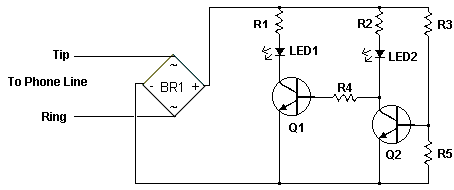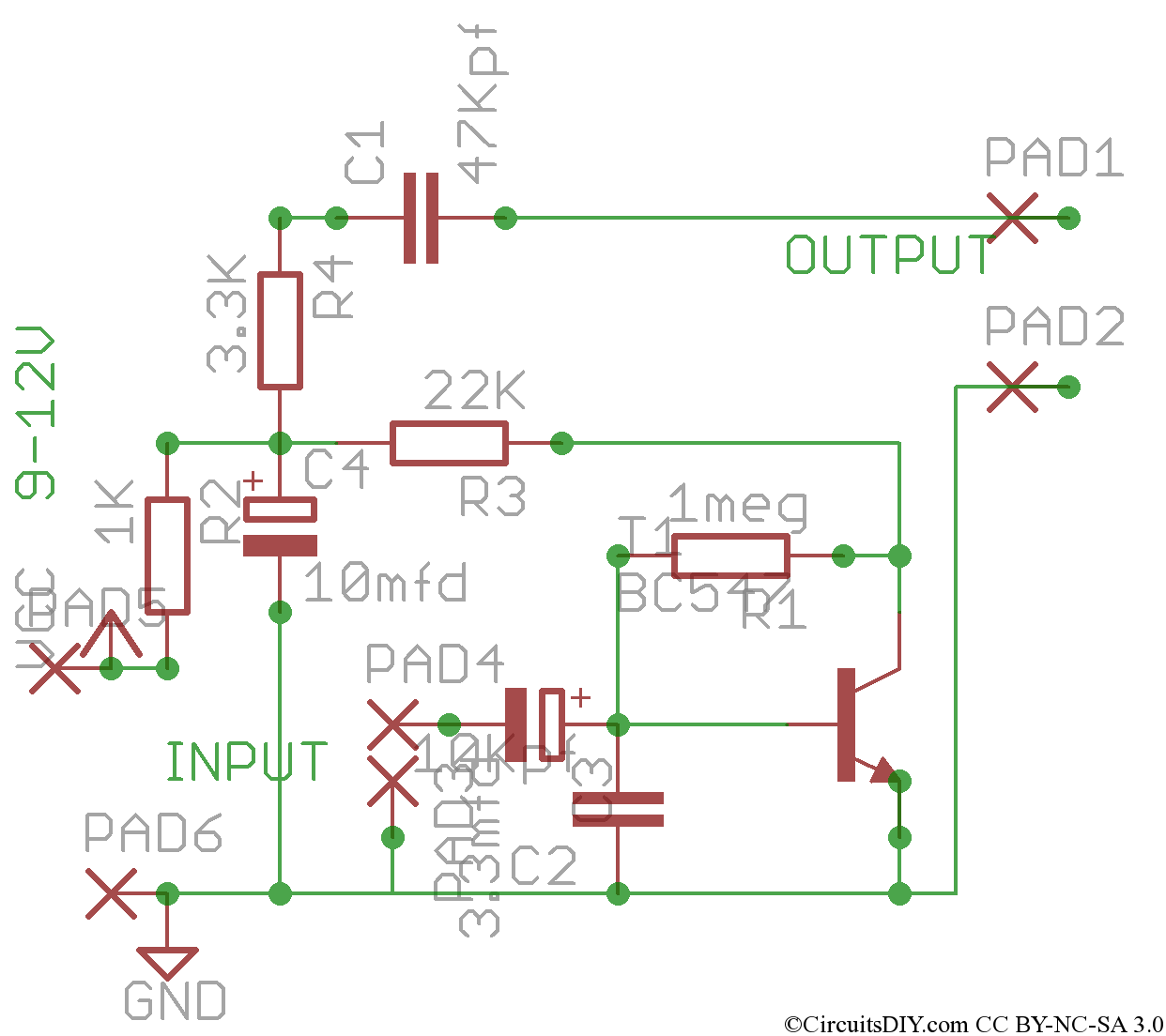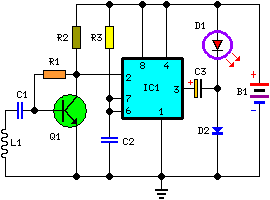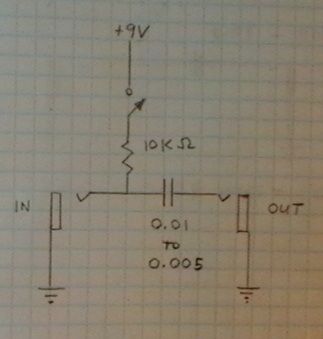
Phone Busy Indicators

The circuit indicates that the phone is in use by illuminating a red LED. When the phone is not in use, a green LED lights up. It operates without requiring external power and can be connected at any point on the phone line, including being mounted inside the phone. The ring voltage on a phone line ranges from 90 to 130 volts. It is important to ensure that no incoming calls interrupt the connection process.
The described circuit utilizes two light-emitting diodes (LEDs) to visually indicate the status of a telephone line. The red LED serves as a signal that the phone is currently in use, while the green LED indicates when the line is free. This dual-LED system provides a clear and immediate visual cue regarding the phone's operational status.
The circuit is designed to function without the need for an external power source, which enhances its versatility. It can be integrated into various points along the phone line, making it suitable for installation inside the phone casing or anywhere along the line. This feature allows for a clean installation without the need for additional power supply considerations.
The operation of the circuit is based on the ring voltage present on the phone line, which typically ranges from 90 to 130 volts. This voltage is used to power the LEDs and detect the line's status. The circuit must be carefully connected to avoid any interruptions from incoming calls, as these can affect the performance of the circuit and potentially cause damage.
To ensure safety and reliability, it is advisable to use components rated for the voltage levels encountered in telephone lines. The LEDs should be chosen based on their forward voltage and current specifications to ensure proper operation without exceeding their ratings. Additionally, appropriate resistors may be required to limit the current flowing through the LEDs, preventing potential burnout.
Overall, this circuit provides a practical solution for indicating phone line status through simple visual signals, enhancing user awareness without the need for complex power arrangements.It signals that the phone is in use by lighting a red LED. When the phone is not in use, a green LED is lit. It needs no external power and can be connected anywhere on the phone line, even mounted inside the phone. 4. The ring voltage on a phone line is anywhere from 90 to 130 volts. Make sure no one calls while you are making the line connections or you`ll know it. 🔗 External reference
The described circuit utilizes two light-emitting diodes (LEDs) to visually indicate the status of a telephone line. The red LED serves as a signal that the phone is currently in use, while the green LED indicates when the line is free. This dual-LED system provides a clear and immediate visual cue regarding the phone's operational status.
The circuit is designed to function without the need for an external power source, which enhances its versatility. It can be integrated into various points along the phone line, making it suitable for installation inside the phone casing or anywhere along the line. This feature allows for a clean installation without the need for additional power supply considerations.
The operation of the circuit is based on the ring voltage present on the phone line, which typically ranges from 90 to 130 volts. This voltage is used to power the LEDs and detect the line's status. The circuit must be carefully connected to avoid any interruptions from incoming calls, as these can affect the performance of the circuit and potentially cause damage.
To ensure safety and reliability, it is advisable to use components rated for the voltage levels encountered in telephone lines. The LEDs should be chosen based on their forward voltage and current specifications to ensure proper operation without exceeding their ratings. Additionally, appropriate resistors may be required to limit the current flowing through the LEDs, preventing potential burnout.
Overall, this circuit provides a practical solution for indicating phone line status through simple visual signals, enhancing user awareness without the need for complex power arrangements.It signals that the phone is in use by lighting a red LED. When the phone is not in use, a green LED is lit. It needs no external power and can be connected anywhere on the phone line, even mounted inside the phone. 4. The ring voltage on a phone line is anywhere from 90 to 130 volts. Make sure no one calls while you are making the line connections or you`ll know it. 🔗 External reference





